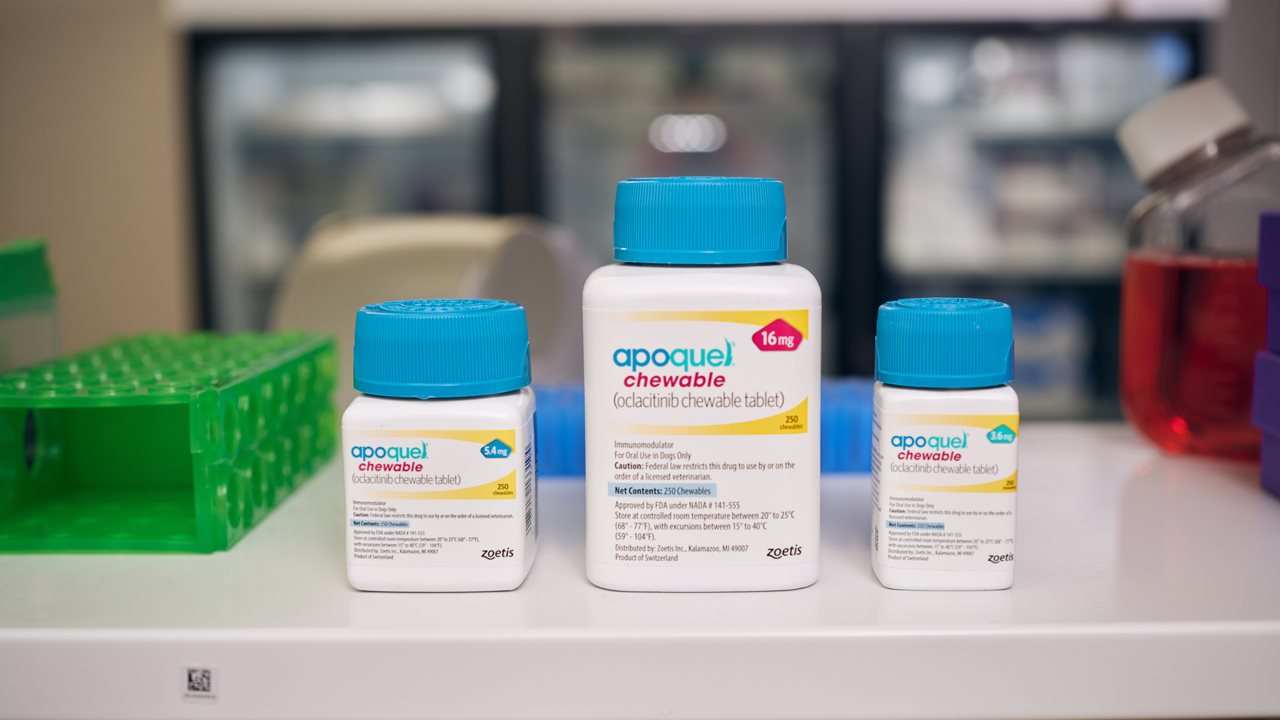(BPT) – What’s the number one reason pet parents bring their dogs to the veterinarian? If you thought the answer was annual vaccinations or stomach issues, you might be surprised to find out the answer is skin allergies.(1) This condition is also called allergic dermatitis, and it can lead to allergic itch. How common is it? Around 30 million households in the U.S. have a dog with pruritus,(2) affecting up to 15% of the dog population. Itching caused by allergic skin disease can be acute (or short-term), recurrent, seasonal, or chronic, and it can impact the quality of life for both the dog and its owner.
While it can be challenging to recognize the signs of allergic itch, here are five tips to ensure your canine family member is getting the best care.
1. DO keep track of your dog’s behavior if you suspect allergic itch
Some of the signs of allergic itch may be obvious, while other signs are less recognizable and can be confused for typical dog behavior. For example, scratching and licking can be normal dog behaviors when done occasionally. These actions become problematic when they occur more than usual or frequently in dogs. Other signs of allergic itch include chewing or biting at the skin, excessive rolling, rubbing or scooting, recurrent ear problems, hair loss, body odor and/or rash, redness, and greasy skin. The best advice is to pay attention to your dog’s daily behaviors and call your veterinarian for a skin health visit if you think there’s been a change.

2. DON’T try to treat your dog’s itching on your own
While it may be frustrating to see your dog scratching at an itch that never seems to go away, resist the temptation to treat your dog’s allergic itch with over-the-counter antihistamines, like those found in common allergy medicines for humans, or anti-itch shampoos or sprays. These may only provide temporary relief because they do not get to the source of the itch in most dogs. Almost 8 million dogs go untreated by a veterinarian for itch.(2) That’s a huge number of dogs that go untreated – make sure your dog isn’t one of them.
3. DO make regular wellness visits part of your dog’s care routine
August is Itchy Pet Awareness Month. Even if you don’t think your dog is showing signs of allergic itch, you can take part in celebrating this month by scheduling a wellness visit with your veterinarian, which includes a skin health check. In fact, more than 1.9 million dogs with allergic itch were given a prescription during Itchy Pet Awareness Month in 2023,(3) which shows just how common this condition truly is across the country.
4. DON’T wait to see your veterinarian if you see signs of allergic itch
Allergic itch is an urgent medical condition that can lead to skin and ear infections, especially if not treated promptly. Pet owners shouldn’t wait since their dog’s signs can worsen from a delay in receiving effective treatment. The best way to be certain about the cause of your dog’s allergic itch is to schedule a visit with your veterinarian.

5. DO make sure your dog takes their medication
Safe and effective prescription medications are available to help control allergic itch, but they only work if your dog is taking them. Here are two important points owners whose dogs have allergic itch should consider:
- 65% of dog owners reported challenges when giving their itchy dog tablet-based treatments.(4)
- 30% of owners with itchy dogs build extra time into their day, or interrupt their daily routine, to administer a tablet medication.(4)
Fortunately, the U.S. Food and Drug Administration (FDA) approved Apoquel® Chewable (oclacitinib chewable tablet) in 2023 for the control of pruritus associated with allergic dermatitis and control of atopic dermatitis in dogs at least 12 months of age. With Apoquel Chewable – the first and only chewable treatment for allergic itch in dogs – owners can now offer their pet the easy-to-give medication that is accepted by over 91% of dogs.(5) This may improve owner compliance and make daily dosing easier, which can help maintain the unique bond they share with their pet.
Don’t let allergic itch interrupt the quality time you spend with your canine family members. Visit ApoquelDogs.com to learn more about Apoquel Chewable and take a quiz that can help you find out if your dog may have signs of allergic itch.

APOQUEL CHEWABLE IMPORTANT SAFETY INFORMATION: Do not use Apoquel Chewable in dogs less than 12 months of age or those with serious infections. Apoquel Chewable may increase the chances of developing serious infections, and may cause existing parasitic skin infestations or pre-existing cancers to get worse. Consider the risks and benefits of treatment in dogs with a history of recurrence of these conditions. New neoplastic conditions (benign and malignant) were observed in clinical studies and post-approval. Apoquel Chewable has not been tested in dogs receiving some medications including some commonly used to treat skin conditions such as corticosteroids and cyclosporines. Do not use in breeding, pregnant, or lactating dogs. Most common side effects are vomiting and diarrhea. Apoquel Chewable has been used safely with many common medications including parasiticides, antibiotics and vaccines. See full Prescribing Information for Apoquel Chewable at ApoquelChewablePI.com.
Apoquel Chewable Indications
Control of pruritus associated with allergic dermatitis and control of atopic dermatitis in dogs at least 12 months of age.
[1] Dermatitis, gastroenteritis among most common conditions that prompt veterinary visits. Nationwide.com, Published April 18, 2024. Accessed April 26, 2024
[4] ZMR: ZMR: Adelphi/PROVE Pet Owner Preferences for Pill vs Treat All Markets WTP Survey Results March 2023.
[5] Visser M, Walsh K, King V et al. Acceptance of oclacitinib maleate (Apoquel®) chewable tablets in client-owned dogs with allergic and atopic dermatitis. BMC Veterinary Research 2022; 18:103. N=121 dogs
All trademarks are the property of Zoetis Services LLC or a related company or a licensor unless otherwise noted.
© 2024 Zoetis Services LLC. All rights reserved. APC-00212


